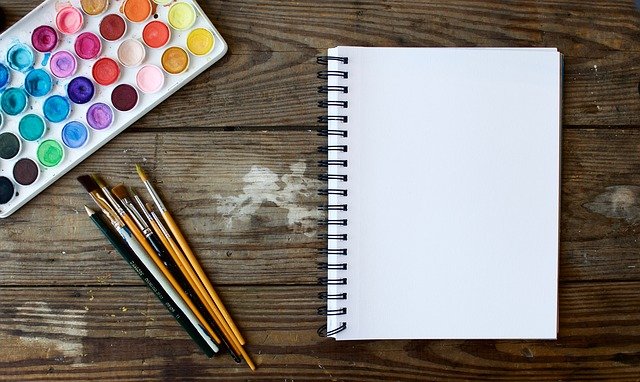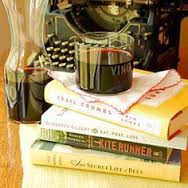 Being at home, with little opportunity to go out to museums and play spaces, many families have been looking to do more projects at home. As a Children’s Librarian and crafty lady, I am here to help! The library has programs, such as our Take + Make craft bags or 5 Alive! toddler sensory kits, that you can pick up and bring home to work on with your kids. We provide the materials and instructions, so you can just let the kids explore without having to plan another activity yourself.
Being at home, with little opportunity to go out to museums and play spaces, many families have been looking to do more projects at home. As a Children’s Librarian and crafty lady, I am here to help! The library has programs, such as our Take + Make craft bags or 5 Alive! toddler sensory kits, that you can pick up and bring home to work on with your kids. We provide the materials and instructions, so you can just let the kids explore without having to plan another activity yourself.
Maybe you want to do more, but are not sure where to start. Sometimes as a parent, it can feel like you are supposed to magically have all the crafting ideas and knowledge you didn’t have when you were a single adult. Starting out can be overwhelming! There are so many videos, blogs, and books out there, not to mention the materials to comb through. So let me walk you through setting up a decent project area for your family to enjoy.
First off, you do not need tons of space. I have lived mainly in apartments for my adult life, and had very little extra space. You will need a shelf or two in a closet or cabinet, or you can use a plastic tote to store your supplies. You need an area to create in, but that could also be your kitchen table, basement floor, tv tray, or anywhere else you have space to work.
Second: supplies! This is my favorite part. To begin with you only need a few things: white and multicolored paper, pencils, crayons/markers, scissors and glue (sticks or white.) If you already have this and are looking for a little more, my other suggestion would be paint – watercolor is the least messy, as well as brushes, tissue paper, pom poms, craft sticks, and tape. Then, get a little creative – what else do you already have? Cotton swabs, paper plates, cotton balls, magazines and empty cereal boxes are all supplies that can spark your child’s imagination. You don’t have to spend tons of money – go to the dollar store or look in your recycling.
The third step is your mindset. This may be the most important part, because if you realize this before you begin a project, it is going to save you a lot of frustration. What is the outcome you are looking for? Do you want to teach your kids something? Do you want to let them explore? Do you want to have a product at the end? Do you want to work together or let them work independently? This may seem obvious, but those questions will determine how you present the materials to your kids.
For example, if you want to make a birthday card for a friend, you would put out paper and something to color or draw with. You would expect the paper to be flat or folded in half, with a picture or a message on it. You could put out more paper or paint or pom poms, but you want it to be a card at the end. Now, what if you wanted to teach your child about watercolors? You might take out different papers and brushes and the watercolor paints. You may show them a picture painted with watercolors. Or you may just place the stuff on a table and let them go. But the expectation is they will have an experience with using watercolors. What if you just want to let them explore? This is called process art, and for some people, this can be more difficult than following directions. Process art is the idea that the process of making something is how we learn, and the end product doesn’t matter. You put out the materials, step back, and let the kids go. If you have glue, pom poms, glitter, paint, markers, cotton balls and paper plates out, try to resist the urge to tell them what to do and how to do it. I know, this can be so hard! But the idea is to let them learn by exploring and figuring it out themselves. They may dip that marker in the paint to see what that does. It may turn out beautiful, or you may need to throw out that marker. If you mentally prepare beforehand, it won’t be as difficult in the moment.
That is not to say there can’t be rules! You don’t have to let them draw on the wall or dump out a whole container of glue. Put an old sheet down or give the kids oversized t-shirts if you are worried about making a mess. Sometimes, a blank paper can be intimidating, and you may need to encourage your kids with a theme or idea. Try saying, “what can you paint a picture with that isn’t a paintbrush?” or “let’s design a space car!” Usually that is enough to get the wheels turning.
I find the books The Artful Parent, Creative Family and Play, Make, Create, A Process Art Handbook great for ideas on how to integrate art activities into your family life. Art Lab for Kids and Playing with Collage can provide a little background on different art materials and projects, and each is fully illustrated with examples to inspire the whole family. There are a ton of craft books out there that list step-by-step instructions for projects for every age, and Pinterest is a website where I always find inspiration. Popular blogs like redtedart.com and tinkerlab.com also offer up ideas for kids.
It can be easy to feel overwhelmed, especially when you don’t feel crafty yourself. But don’t take it too seriously; use the materials around you, and try seeing it through your kid’s eyes. They may even teach you something.
Nicole Guerra-Coon is the Assistant Children’s Librarian at the Morrill Memorial Library in Norwood, MA. Look for her article in the January 7, 2021 issue of the Transcript and Bulletin.



